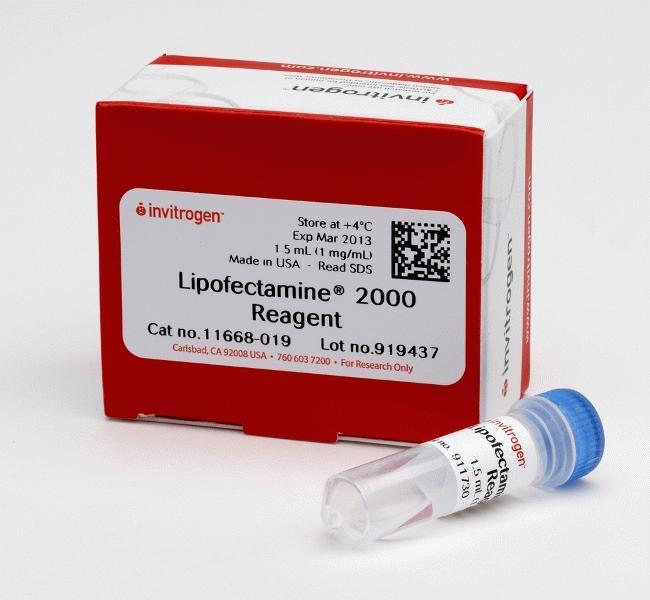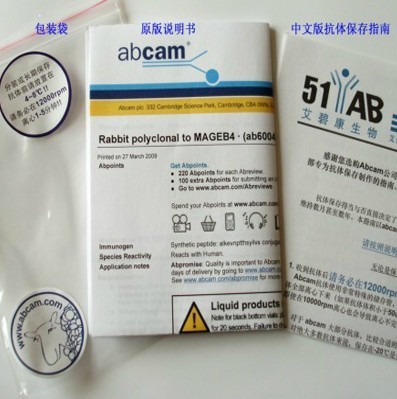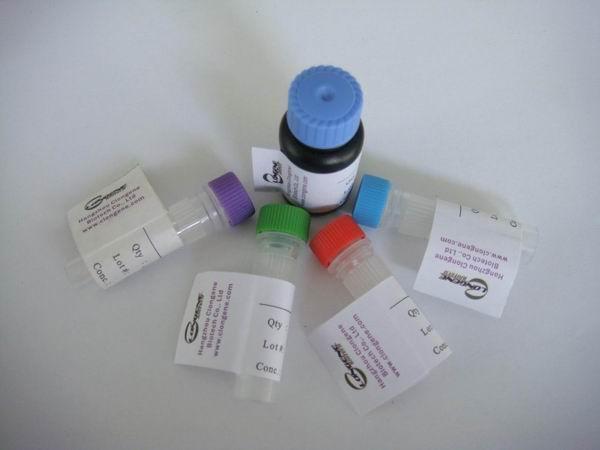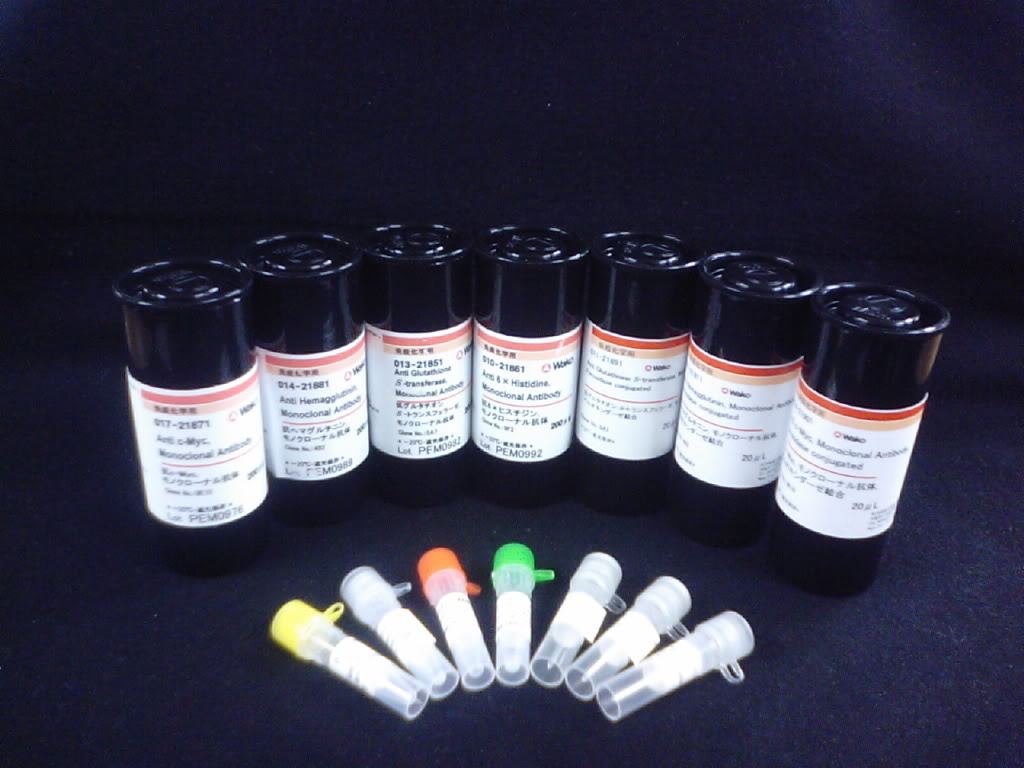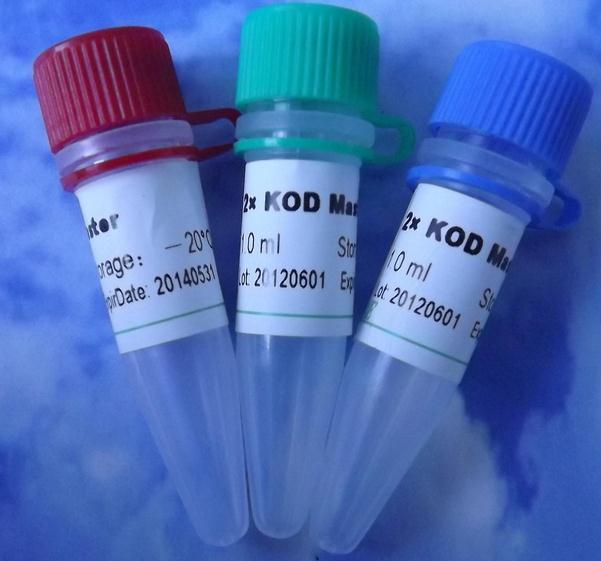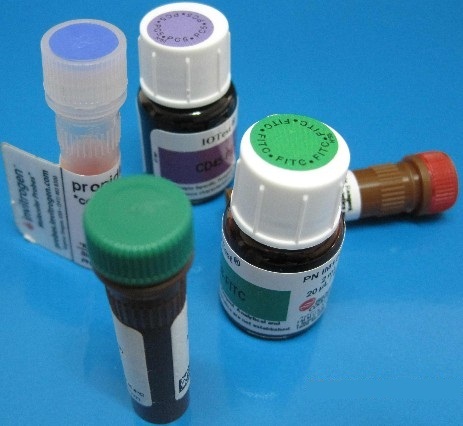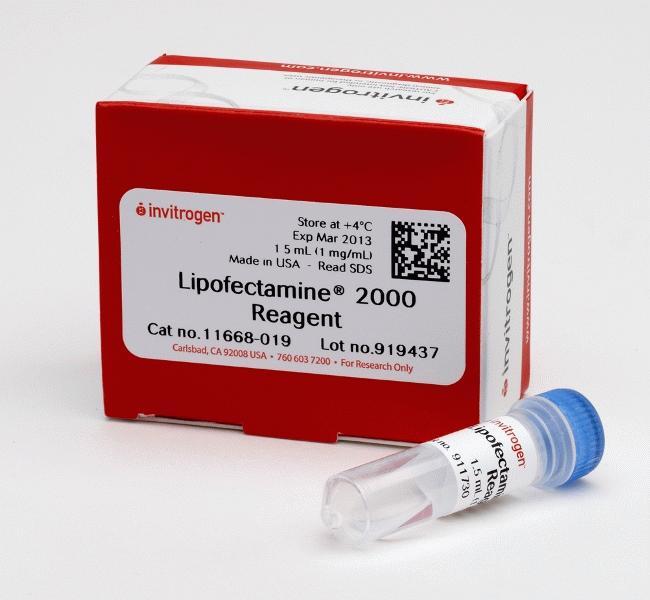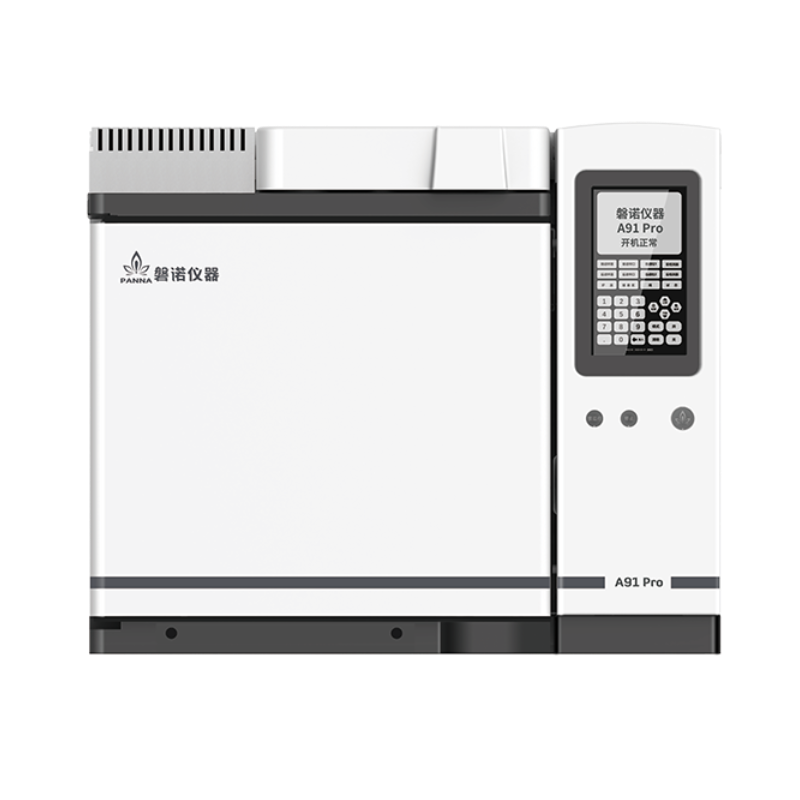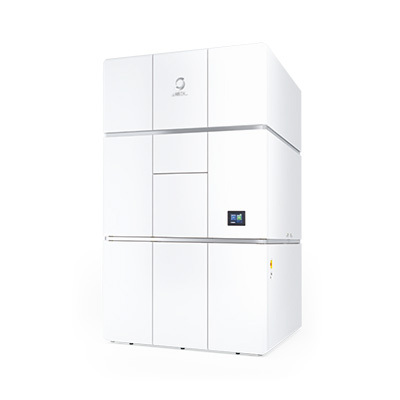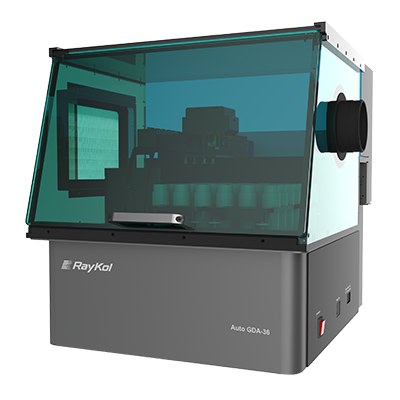载脂蛋白E4抗体
载脂蛋白E4抗体
〖别名〗Apolipoprotein E4; AD2; Alzheimer disease 2 (APOE*E4 associated, late onset); Apo E4; APOE; apoe4; Apolipoprotein E; Apolipoprotein E3; LDLCQ5; LPG; MGC1571.
〖浓度〗1mg/1ml
〖规格〗0.2ml/200μg
〖抗体来源〗Rabbit
〖克隆类型〗载脂蛋白E4抗体polyclonal
〖交叉反应〗Human, Mouse, Rat
〖产品类型〗一抗
〖研究领域〗肿瘤 心血管 细胞生物 免疫学 神经生物学 细胞凋亡 转录调节因子
〖蛋白分子量〗predicted molecular weight: 34kDa
〖性状〗Lyophilized or Liquid
〖免疫原〗KLH conjugated synthetic peptide derived from human APOE4
〖亚型〗IgG
〖纯化方法〗affinity purified by Protein A
〖储存液〗0.01M PBS, pH 7.4 with 10 mg/ml BSA and 0.1% Sodium azide
〖产品应用〗WB=1:100-500 ELISA=1:500-1000 IP=1:20-100 IHC-P=1:100-500 IHC-F=1:100-500 IF=1:100-500
(石蜡切片需做抗原修复)
not yet tested in other applications.
optimal dilutions/concentrations should be determined by the end user.
〖保存条件〗Store at -20 °C for one year. Avoid repeated freeze/thaw cycles. The lyophilized antibody is stable at room temperature for at least one month and for greater than a year when kept at -20°C. When reconstituted in sterile pH 7.4 0.01M PBS or diluent of antibody the antibody is stable for at least two weeks at 2-4 °C.
Important Note This product as supplied is intended for research use only, not for use in human, therapeutic or diagnostic applications.
〖产品介绍〗Apolipoprotein E, a main apoprotein of the chylomicron, binds to a specific receptor on liver cells and peripheral cells and is essential for the normal catabolism of triglyceride-rich lipoprotein constituents. ApoE exists in three major isoforms; E2, E3, and E4, which differ from one another by a single amino-acid substitution. Compared with E3 and E4, E2 exhibits the lowest receptor binding affinity. Defects in ApoE are a cause of hyperlipoproteinemia type III due to increased plasma cholesterol and triglycerides levels which are the consequence of impaired clearance of chylomicron and VLDL remnants.
Summary: Chylomicron remnants and very low density lipoprotein (VLDL) remnants are rapidly removed from the circulation by receptor-mediated endocytosis in the liver. Apolipoprotein E, a main apoprotein of the chylomicron, binds to a specific receptor on liver cells and peripheral cells. ApoE is essential for the normal catabolism of triglyceride-rich lipoprotein constituents. The APOE gene is mapped to chromosome 19 in a cluster with APOC1 and APOC2. Defects in apolipoprotein E result in familial dysbetalipoproteinemia, or type III hyperlipoproteinemia (HLP III), in which increased plasma cholesterol and triglycerides are the consequence of impaired clearance of chylomicron and VLDL remnants. [provided by RefSeq, Jul 2008].
Function : Mediates the binding, internalization, and catabolism of lipoprotein particles. It can serve as a ligand for the LDL (apo B/E) receptor and for the specific apo-E receptor (chylomicron remnant) of hepatic tissues.
Subcellular Location : Secreted.
Tissue Specificity : Occurs in all lipoprotein fractions in plasma. It constitutes 10-20% of very low density lipoproteins (VLDL) and 1-2% of high density lipoproteins (HDL). APOE is produced in most organs. Significant quantities are produced in liver, brain, spleen, lung, adrenal, ovary, kidney and muscle.
Post-translational modifications : Synthesized with the sialic acid attached by O-glycosidic linkage and is subsequently desialylated in plasma. O-glycosylated with core 1 or possibly core 8 glycans. Thr-307 is a minor glycosylation site compared to Ser-308.
Glycated in plasma VLDL of normal subjects, and of hyperglycemic diabetic patients at a higher level (2-3 fold).
Phosphorylation sites are present in the extracellular medium.
DISEASE : Defects in APOE are a cause of hyperlipoproteinemia type 3 (HLPP3) [MIM:107741]; also known as familial dysbetalipoproteinemia. Individuals with HLPP3 are clinically characterized by xanthomas, yellowish lipid deposits in the palmar crease, or less specific on tendons and on elbows. The disorder rarely manifests before the third decade in men. In women, it is usually expressed only after the menopause. The vast majority of the patients are homozygous for APOE*2 alleles. More severe cases of HLPP3 have also been observed in individuals heterozygous for rare APOE variants. The influence of APOE on lipid levels is often suggested to have major implications for the risk of coronary artery disease (CAD). Individuals carrying the common APOE*4 variant are at higher risk of CAD.
Genetic variations in APOE are associated with Alzheimer disease type 2 (AD2) [MIM:104310]. It is a late-onset neurodegenerative disorder characterized by progressive dementia, loss of cognitive abilities, and deposition of fibrillar amyloid proteins as intraneuronal neurofibrillary tangles, extracellular amyloid plaques and vascular amyloid deposits. The major constituent of these plaques is the neurotoxic amyloid-beta-APP 40-42 peptide (s), derived proteolytically from the transmembrane precursor protein APP by sequential secretase processing. The cytotoxic C-terminal fragments (CTFs) and the caspase-cleaved products such as C31 derived from APP, are also implicated in neuronal death. Note=The APOE*4 allele is genetically associated with the common late onset familial and sporadic forms of Alzheimer disease. Risk for AD increased from 20% to 90% and mean age at onset decreased from 84 to 68 years with increasing number of APOE*4 alleles in 42 families with late onset AD. Thus APOE*4 gene dose is a major risk factor for late onset AD and, in these families, homozygosity for APOE*4 was virtually sufficient to cause AD by age 80. The mechanism by which APOE*4 participates in pathogenesis is not known.
Defects in APOE are a cause of sea-blue histiocyte disease (SBHD) [MIM:269600]; also known as sea-blue histiocytosis. This disorder is characterized by splenomegaly, mild thrombocytopenia and, in the bone marrow, numerous histiocytes containing cytoplasmic granules which stain bright blue with the usual hematologic stains. The syndrome is the consequence of an inherited metabolic defect analogous to Gaucher disease and other sphingolipidoses.
Defects in APOE are a cause of lipoprotein glomerulopathy (LPG) [MIM:611771]. LPG is an uncommon kidney disease characterized by proteinuria, progressive kidney failure, and distinctive lipoprotein thrombi in glomerular capillaries. It mainly affects people of Japanese and Chinese origin. The disorder has rarely been described in Caucasians.
Similarity : Belongs to the apolipoprotein A1/A4/E family.
Database links : UniProtKB/Swiss-Prot: P02649
本公司产品现货供应,货期短,质量可靠。仅用于科研实验不应用于临床。我们用专业的态度,一流的服务,全程实验指导,让你的数据不在成为实验奇谈。选择优质的载脂蛋白E4抗体,你的小伙伴都会惊呆的。本公司专业供应各种进口、国产一抗及二抗。代理品牌有R&D、Santa Cruz、Bipec、Millipore等国际知名品牌,品种多达7000多种。让你的科研之路不再布满荆棘。
我们还可以为客户提供产品说明书。载脂蛋白E4抗体拥有高纯度、高效价、高特异性的特点,可以应用于多种实验。免费送货上门,为您大大节省了时间和金钱。
Ab-(001)-06540 Anti-p53BP1(Ser25/29) /FITC 荧光素标记兔抗人、大、小鼠磷酸化p53结合蛋白1抗体IgG ,英文名: Anti-p53BP1 ,规格: 0.2ml
Ab-(001)-06541 Anti-phospho-P53 (Ser15) /FITC 荧光素标记磷酸化肿瘤抑制基因P53抗体IgG ,英文名: Anti-phospho-P53 ,规格: 0.2ml
Ab-(001)-06542 Anti-phospho-P53 (Ser37) /FITC 荧光素标记磷酸化肿瘤抑制基因P53抗体IgG ,英文名: Anti-phospho-P53 ,规格: 0.2ml
Ab-(001)-06543 Anti-phospho-P53 (Ser46) /FITC 荧光素标记磷酸化肿瘤抑制基因P53抗体IgG ,英文名: Anti-phospho-P53 ,规格: 0.2ml
Ab-(001)-06544 Anti-phospho-P53 (Ser6)/FITC 荧光素标记磷酸化肿瘤抑制基因P53抗体IgG ,英文名: Anti-phospho-P53 ,规格: 0.2ml
Ab-(001)-06545 Anti-phospho-P53 (Ser9)/FITC 荧光素标记磷酸化肿瘤抑制基因P53抗体IgG ,英文名: Anti-phospho-P53 ,规格: 0.2ml
Ab-(001)-06546 Anti-phospho-P53 (Thr18) /FITC 荧光素标记磷酸化肿瘤抑制基因P53抗体IgG ,英文名: Anti-phospho-P53 ,规格: 0.2ml
Ab-(001)-06547 Anti-phospho-P53 (Thr81)/FITC 荧光素标记磷酸化肿瘤抑制基因P53抗体IgG ,英文名: Anti-phospho-P53 ,规格: 0.2ml
Ab-(001)-06548 Anti-phospho-P53 (Ser20)/FITC 荧光素标记磷酸化肿瘤抑制基因P53抗体IgG ,英文名: Anti-phospho-P53 ,规格: 0.2ml
Ab-(001)-06549 Anti-phospho-P53 (Ser315)/FITC 荧光素标记磷酸化肿瘤抑制基因P53抗体IgG ,英文名: Anti-phospho-P53 ,规格: 0.2ml
Ab-(001)-06550 Anti-phospho-P53 (Ser33) /FITC 荧光素标记磷酸化肿瘤抑制基因P53抗体IgG ,英文名: Anti-phospho-P53 ,规格: 0.2ml
Ab-(001)-06551 Anti-p58ipk/FITC 荧光素标记p58ipk抗体IgG ,英文名: Anti-p58ipk/FITC ,规格: 0.2ml
Ab-(001)-06552 Anti-Phospho-p63 (Ser395) /FITC 荧光素标记磷酸化P63肿瘤抑制基因抗体IgG ,英文名: Anti-Phospho-p63 ,规格: 0.2ml
Ab-(001)-06553 Anti-p70 S6 Kinase/P70 Beta1/FITC 荧光素标记p70S6Kb抗体IgG ,英文名: Anti-p70 ,规格: 0.2ml
Ab-(001)-06554 Anti-P73 protein/FITC 荧光素标记P73肿瘤抑制基因抗体IgG ,英文名: Anti-P73 ,规格: 0.2ml
Ab-(001)-06555 Anti-Phospho-p73 (Tyr99) /FITC 荧光素标记磷酸化P73肿瘤抑制基因抗体IgG ,英文名: Anti-Phospho-p73 ,规格: 0.2ml
Ab-(001)-06556 Anti-p70 S6 Kinase Beta2/P70 Beta2/FITC 荧光素标记核糖体S6蛋白激酶β2抗体IgG ,英文名: Anti-p70 ,规格: 0.2ml
Ab-(001)-06557 Anti-Phospho-p63 (Ser455)/FITC 荧光素标记磷酸化P63肿瘤抑制基因抗体IgG ,英文名: Anti-Phospho-p63 ,规格: 0.2ml
Ab-(001)-06558 Anti-Phospho-p63 (Ser160/Ser162) /FITC 荧光素标记磷酸化P63肿瘤抑制基因抗体IgG ,英文名: Anti-Phospho-p63 ,规格: 0.2ml
Ab-(001)-06559 Anti-P311 protein/FITC 荧光素标记神经再生相关蛋白抗体IgG ,英文名: Anti-P311 ,规格: 0.2ml
Ab-(001)-06560 Anti-VIP receptor II/FITC 荧光素标记腺苷酸环化酶激活肽受体-II/血管活性肠肽受体-II抗体IgG ,英文名: Anti-VIP ,规格: 0.2ml
Ab-(001)-06561 Anti-PACAP/VIP receptor-I /FITC 荧光素标记腺苷酸环化酶激活肽受体-I/血管活性肠肽-I抗体IgG ,英文名: Anti-PACAP/VIP ,规格: 0.2ml
Ab-(001)-06562 Anti-PACAP-27/38 /FITC 荧光素标记腺苷酸环化酶激活肽-27/38抗体IgG ,英文名: Anti-PACAP-27/38 ,规格: 0.2ml
Ab-(001)-06563 Anti-PACAP-38 /FITC 荧光素标记腺苷酸环化酶激活肽-38抗体IgG ,英文名: Anti-PACAP-38 ,规格: 0.2ml
Ab-(001)-06564 Anti-PADI4/PAD4 /FITC 荧光素标记关节炎相关基因抗体IgG ,英文名: Anti-PADI4/PAD4 ,规格: 0.2ml
Ab-(001)-06565 Anti-PAF/FITC 荧光素标记血小板活化因子抗体IgG ,英文名: Anti-PAF/FITC ,规格: 0.2ml
Ab-(001)-06566 Anti-PAFR/FITC 荧光素标记抗血小板活化因子受体抗体IgG ,英文名: Anti-PAFR/FITC ,规格: 0.2ml
Ab-(001)-06567 Anti-PAI-1/FITC 荧光素标记纤溶酶原激活物抑制因子抗体IgG ,英文名: Anti-PAI-1/FITC ,规格: 0.2ml
Ab-(001)-06568 Anti-PAI-2/FITC 荧光素标记纤溶酶原激活物抑制因子2抗体体IgG ,英文名: Anti-PAI-2/FITC ,规格: 0.2ml
Ab-(001)-06569 Anti-PALB2/FITC 荧光素标记乳腺癌易感基因相关蛋白2IgG ,英文名: Anti-PALB2/FITC ,规格: 0.2ml
Ab-(001)-06570 Anti-Pan-ras/FITC 荧光素标记抗Pan ras抗体IgG ,英文名: Anti-Pan-ras/FITC ,规格: 0.2ml
Ab-(001)-06571 Anti-PAP2c /FITC 荧光素标记磷脂酸磷酸酶2C抗体IgG ,英文名: Anti-PAP2c ,规格: 0.2ml
Ab-(001)-06572 Anti-PAR-1/FITC 荧光素标记蛋白酶激活受体-1抗体IgG ,英文名: Anti-PAR-1/FITC ,载脂蛋白E4抗体规格: 0.2ml
Ab-(001)-06573 Anti-PAR-2/FITC 荧光素标记蛋白酶激活受体-2抗体IgG ,英文名: Anti-PAR-2/FITC ,规格: 0.2ml
Ab-(001)-06574 Anti-PAR4/FITC 荧光素标记蛋白酶活化受体4/前列腺细胞凋亡反应蛋白4抗体IgG ,英文名: Anti-PAR4/FITC ,规格: 0.2ml
更多![]()
企业名称
上海通蔚实业有限公司
企业信息已认证
企业类型
信用代码
310116003070684
成立日期
2014-04-16
注册资本
10
经营范围
上海通蔚实业有限公司
公司地址
上海市金山区枫泾镇环东一路65弄2号3463室
客服电话



